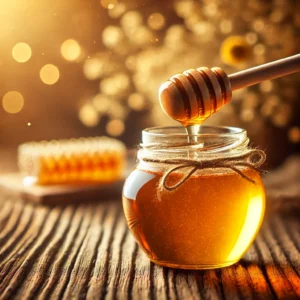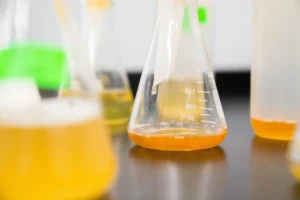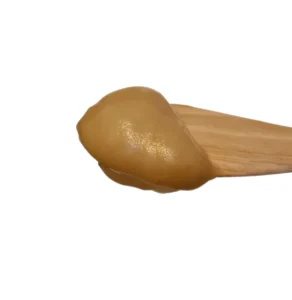If you’ve ever opened a jar of honey and found it thicker, grainy, or cloudy, you might have wondered: Has my honey gone bad?
The short answer? No! Crystallization is a natural process that happens over time, and it doesn’t mean your honey has spoiled.
In this article, we’ll explore:
✅ Why honey crystallizes
✅ How to prevent crystallization
✅ How to return honey to its liquid form—without destroying its nutrients
Why Does Honey Crystallize?
All raw honey will eventually crystallize—it’s just a matter of when. The process depends on the natural ratio of glucose and fructose in the honey.
More glucose = Crystallization happens faster
More fructose = Stays liquid longer
Each type of honey has different levels of glucose and fructose, depending on which flowers the bees collected nectar from. That’s why some honeys stay liquid for years, while others start crystallizing within weeks.
How Long Does It Take for Honey to Crystallize?
The crystallization process varies:
Some honeys crystallize in just a few weeks (like those with higher glucose levels).
Other honeys take months or years to crystallize (like acacia honey, which is high on fructose).
However, you can slow down crystallization by storing honey at room temperature—ideally in a dark cupboard.
Avoid storing honey in the fridge! Cold temperatures speed up crystallization rather than preventing it.
What Does Crystallizing Honey Look Like?
Here’s how you’ll know your liquid honey has started crystallizing:
✅ Cloudy or opaque appearance (instead of clear and golden).
✅ Formation of small sugar-like crystals (which may grow larger over time).
✅ Thicker or grainy texture (instead of smooth).
But don’t worry! Crystallization does not mean the honey is bad. It’s just a sign that it’s raw and natural. Many people even prefer crystallized honey for its thick, spreadable texture!
How to Turn Crystallized Honey Back into Liquid Form
If you prefer your honey liquid, you can easily restore it using gentle heat. Here are two safe methods:
Method 1: Warm Water Bath (Recommended)
This is the safest way to liquefy honey without destroying its beneficial enzymes.
✅ Steps:
1️⃣ Tightly seal the jar to prevent water from getting inside.
2️⃣ Place the jar in a bowl of warm water (not boiling!).
3️⃣ Let it sit for 15 minutes, then stir the honey.
4️⃣ Repeat if necessary, replacing with warm water if it cools down.
Keep the temperature below 45°C (113°F) to preserve nutrients. Heating honey too much can destroy its natural enzymes and antioxidants.
Method 2: Oven (Low Heat)
If you prefer a hands-off method, use your oven.
✅ Steps:
1️⃣ Set your oven to 40°C (104°F) (use a thermometer to double-check).
2️⃣ Place the honey jar inside and leave for 30 minutes.
3️⃣ Stir occasionally to evenly distribute the heat.
4️⃣ Once fully liquid, remove from the oven and let it cool naturally.
⚠️ Important: Some ovens run hotter than the set temperature, so check that it doesn’t exceed 45°C (113°F). If needed, leave the oven door slightly open to keep the temperature low.
Can You Prevent Honey from Crystallizing?
While you can’t stop crystallization forever, you can slow it down by:
✔️ Storing honey at room temperature (avoid the fridge).
✔️ Keeping honey in glass jars with lid properly on
Creamed Honey: Already Crystallized & Perfectly Smooth
Unlike regular liquid honey, creamed honey is intentionally crystallized in a controlled way to create a smooth, spreadable texture. By carefully stirring the honey during crystallization, large, gritty crystals are prevented from forming. This makes creamed honey perfect for spreading on toast, mixing into yogurt, or pairing with cheese—without worrying about it becoming hard or grainy over time.
Looking for a naturally creamy honey? Try our Late Summer Honey, which has a silky-smooth consistency!
Final Thoughts: Crystallized Honey is Still Good Honey!
Honey is one of the few foods that never expires, and crystallization is completely natural. It’s actually a sign that your honey is pure, raw, and unprocessed!
Whether you love creamy, spreadable honey or prefer it liquid, you can easily adjust it using gentle heat.
🍯 Want to taste some of Norway’s finest raw honey?
👉 Check out our honey collection and experience the difference!





